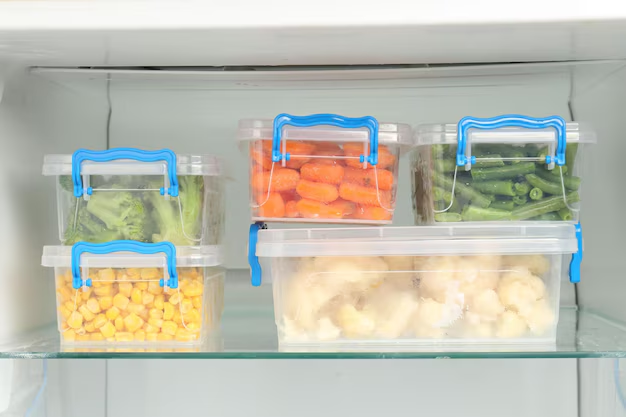How Long Do Brats Last in the Fridge? A Comprehensive Guide to Storing Your Bratwurst Safely
There's nothing quite like the sizzle of bratwurst on a grill, a staple at many barbecues and family gatherings. But what happens when the party’s over and you still have a batch of uncooked brats? Understanding how long brats are good in the refrigerator is crucial to prevent food waste and ensure safety. This guide explores the shelf life of bratwurst, best storage practices, and essential tips to keep your brats fresh and flavorful for as long as possible.
🥩 Understanding Bratwurst: What Are They Exactly?
Before diving into storage tips, it’s useful to understand what bratwurst is. Bratwurst is a type of sausage traditionally made with pork, beef, or veal and seasoned with various spices. The name originates from Germany, where this food item is a cultural staple. Brats can come in different varieties—fresh, pre-cooked, or smoked—and each type may have different storage requirements.
Fresh vs. Pre-Cooked Brats
- Fresh Brats: These are sold raw and require thorough cooking before consumption. They are usually found in the refrigerated section of grocery stores.
- Pre-Cooked Brats: These sausages are boiled or steamed during production, making them quicker to prepare at home.
- Smoked Brats: These are seasoned and smoked, offering distinct flavors and slightly longer shelf life.
📦 How to Store Brats in the Refrigerator
The longevity of your bratwurst in the fridge largely depends on how it’s stored. Here are some tips on how best to preserve their freshness:
Recommended Storage for Fresh Brats
- Use Original Packaging: When you buy fresh brats, keep them in their original packaging if you plan to consume them soon.
- Seal Tightly: Once opened, transfer them to airtight containers or resealable plastic bags to prevent exposure to air and moisture.
- Temperature Matters: Store them in the coldest part of your refrigerator, ideally below 40 degrees Fahrenheit (about 4 degrees Celsius).
Consumer Tip: Fresh brats should ideally be consumed within 1-2 days of opening for optimal quality, although they may last up to 3 days in the refrigerator.
Storing Pre-Cooked and Smoked Brats
- Airtight Containers: Like fresh brats, keep pre-cooked and smoked varieties in airtight storage to prevent drying out.
- Label for Safety: Mark the storage date on the container to keep track of how long they’ve been refrigerated.
- Longer Shelf Life: Pre-cooked and smoked brats generally last a bit longer—typically up to 7 days when properly stored.
⏰ Signs Your Brats Have Gone Bad
Identifying spoiled brats is essential to prevent foodborne illnesses. Here are some signs to watch out for:
- Unpleasant Odor: A sour or foul smell is a strong indicator that the brats have spoiled.
- Color Change: If the brats have turned a grayish or green color, it's time to discard them.
- Texture: Slime or a sticky texture suggests spoilage.
Remember, when in doubt, throw it out. Safety should always come first when dealing with perishable foods.
🕰️ Extending the Shelf Life: Can You Freeze Brats?
If you don’t plan to eat your brats within their refrigerator shelf life, freezing is an excellent option:
How to Freeze Brats
- Prep for Freezing: Wrap each brat in parchment or wax paper; this will provide an initial level of defense against freezer burn.
- Double Bagging: Place them in a freezer-safe bag or airtight container. Double-bagging can further prevent exposure to air and moisture.
- Label Accordingly: Write the freezing date on the package.
Thawing Brats Safely
Proper thawing ensures that brats remain both safe to eat and flavorful:
- In the Refrigerator: This is the safest method, preserving texture and preventing bacterial growth.
- Cold Water Method: Submerge in cold water, changing it every 30 minutes until completely thawed.
Pro Tip: Avoid thawing at room temperature, as it can lead to uneven temperature zones and potential bacteria growth.
🍽️ Cooking Brats: Ensuring Safety and Quality
Cooking brats properly not only enhances their flavor but ensures they are safe to consume. Always aim to cook brats to an internal temperature of 160°F (71°C) to eliminate harmful bacteria.
Cooking Methods
- Grilling: Common for barbecues, grilling can bring out the best flavors. Keep turning them to cook evenly.
- Boiling: Before grilling, some prefer to boil brats in beer or water, enhancing tenderness and ensuring thorough cooking.
- Pan-Frying: Offers a quick and easy cooking method, conducive to getting a crispy skin.
📝 Quick Storage Tips for Busy Consumers
Here’s a succinct list of must-know tips for busy folks on bratwurst storage:
- 🥶 Keep them cold: Always refrigerate brats below 40°F.
- 📅 Use the "First In, First Out" rule: Consume older products first.
- 🏷️ Label diligently: Helps track storage time.
- 🥡 Avoid clutter: Organize your fridge to maintain airflow and expedite cooling.
🧠 Final Insights on Bratwurst Storage
Understanding bratwurst's shelf life and storage guidelines can help you enjoy its rich flavors without the risk of spoilage. Whether you're a seasoned griller or new to these savory sausages, knowing how to store and handle them effectively will ensure you’re savouring every bite safely. Remember, proactive storage and handling are not just about extending shelf life—they’re about enjoying bratwurst as it’s meant to be: fresh, delicious, and safe.
In culinary traditions that bring people together, bratwurst holds a special place. This guide aims to ensure every meal with brats is not just delightful but safe and satisfying. Knowing the ins and outs of bratwurst storage allows you to plan meals better, save money, and reduce waste—making this knowledge valuable whether you're hosting a gathering or simply enjoying a quiet dinner at home.
